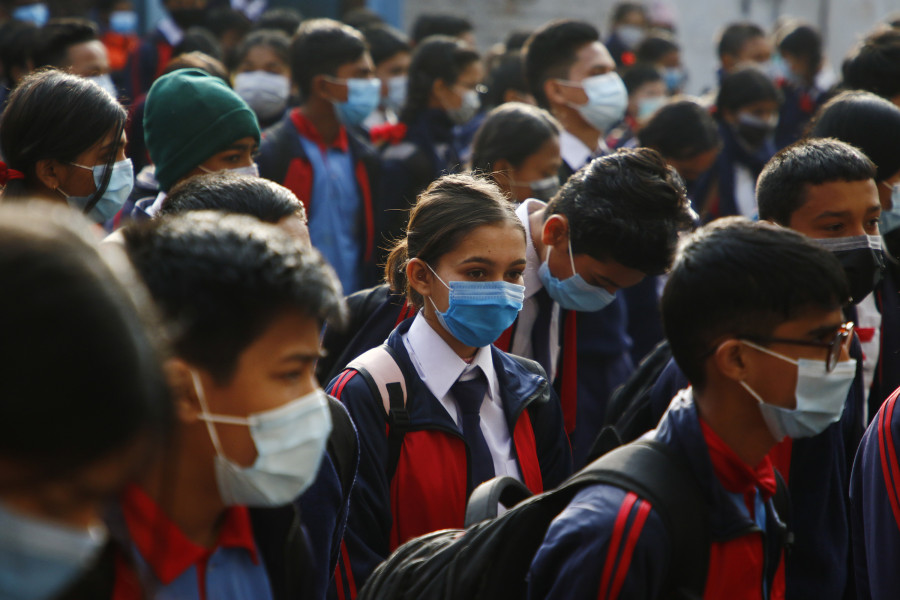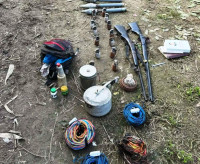National
Government decides to shut schools for four days as air pollution reaches hazardous levels
Air quality has gone from bad to worse over the past few days with smoke and haze covering Kathmandu and other cities.
Post Report
The government has decided to close schools across the country for four days beginning Tuesday in the wake of rising air pollution levels.
A meeting chaired by Education Minister Krishna Gopal Shrestha on Monday took a decision to this effect.
According to Sanjay Sharma, a secretary at the Ministry of Education, the government decided to close schools in view of the adverse effect the rising air pollution can have on students’ health.
Pre-scheduled examinations, however, will continue as per the calendar, said Sharma.
Capital Kathmandu and other cities have seen air quality deteriorate massively since Friday.
Smoke and haze continue to cover Kathmandu Valley and other hill regions.
Raging wildfires as well as vehicle emissions have been attributed to the rising air pollution across the country.
Sundar Prasad Sharma, an under-secretary at the Department of Forest and Soil Conservation, told the Post on Friday that the country has witnessed one of the worst forest fire seasons. On Thursday alone, a record 479 wildfire incidents were reported.
Nepal witnessed a relatively hot and dry winter, with just 25 percent of normal rainfall in the season. With scant rainfall in three winter months (December-February), the country experienced a severe drought-like situation, which is a recipe for wildfire.
Since Friday afternoon, Kathmandu’s air has remained among the most polluted in the world. While Kathmandu was ranked the most polluted city on Friday afternoon, it was the second most polluted city in the world on Sunday at 3:45pm, with Air Quality Index (AQI) readings of 281, which is of ‘very unhealthy’ quality.
As per IQ Air, the Swiss Group that manages real-time worldwide air quality data, Kathmandu’s AQI level has remained between ‘very unhealthy’ and ‘hazardous’ levels in the last three days with the highest AQI level recorded at 411 at 9:45 am on Saturday with PM2.5 at 366 micrograms per cubic metre (μg/m3).
PM.25 (particulate matter) are tiny particles or droplets in the air that are two and one-half microns or less in width.
Particles in the PM2.5 size are considered hazardous as they can travel deeply into the respiratory tract, reaching the lungs.
Exposure to such tiny particles can cause irritation in the eyes, nose, throat and lungs and cause coughing, sneezing, runny nose and shortness of breath.
With Monday’s government decision, schools across the country will remain shut from March 30 to April 2. Since April 3 is Saturday, schools will open only on April 4.
Very unhealthy air quality means health warnings of emergency conditions and the entire population is more likely to be affected whereas hazardous levels call for health alerts and everyone may experience more serious health effects.
According to Education Secretary Sharma, Monday’s meeting also held discussions on whether to extend the school shutdown period if pollution levels continue to rise.




 12.12°C Kathmandu
12.12°C Kathmandu
%20(1).jpg&w=200&height=120)













